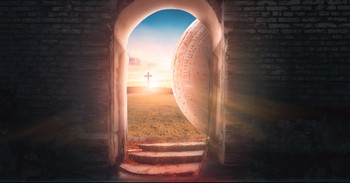In his album, “Resurrection Letters,” Andrew Peterson describes, in a song called “Maybe Next Year,” how a visit to Jerusalem made his faith real like never before. “This is the place where Abraham/cut loose the boy and he killed the ram instead/And this is the place where Jesus said/you could tear down the temple and He’d raise it from the dead.”
This song is in my mind because I’m currently with my wife and ministry colleagues on a tour of Israel. Actually, “tour” is too weak of a word. Any Christian who’s been to the Holy Land will attest that coming here is more of a pilgrimage.
We’re hitting all of the major sites—Caesarea, the Sea of Galilee, the Mount of Olives, Gethsemane, Jerusalem, and of course, the traditional locations of Jesus’ crucifixion, burial, and resurrection.
Seeing these places, where the events of the Bible actually took place—not in some dream-time or fictional world, but right here, on this very soil—well, it’s incredible.
There is actually a place where Jericho once stood. The bluff where King David built his palace is a real bluff. The mountain where Elijah called down fire from heaven exists.
And, as we continue to talk about time after time on BreakPoint, archaeology continues to validate these accounts. These discoveries not only verify the truthfulness of the Bible, they remind us how thoroughly grounded the Christian faith is in actual history.
In just the last year, the existence of the biblical Philistines and Edomites has been confirmed by new discoveries, as has the Babylonian conquest of Jerusalem, and even an obscure official in the court of King Josiah.
But walking where we can prove patriarchs and prophets walked pales in comparison with walking where Jesus walked. That’s what makes a visit to Israel feel most like a pilgrimage. And it’s not just me.
One member of our editorial team tells of how, during his own visit to Israel years ago, he went to the synagogue in Capernaum –which almost certainly stands on the site where Jesus preached and cast out a demon, as is recorded in Mark 1 and Luke 4. Because of the synagogue’s layout and size, archaeologists can say, to within a few feet, that “Jesus stood here.”
Think about that for a second. The God of the universe in human form, the Word who became flesh, stood here. What a mind-boggling concept! And what a reminder that Christianity isn’t some subjective religious experience, or a mere expression of personal piety, as we too often seem to imply.
Many believers, when asked why they accept the Gospel, talk about an experience or a “personal testimony.” The “I know that Jesus lives because He lives in my heart” sort of thing, as goes the song.
Now, don’t misunderstand me. I hope God has captured your heart in such a way that you overflow with personal testimonies and experiences with God. But pointing to these as the main reasons to believe in Christianity misses a crucial point: Our faith is true in an objective, historical, and universal sense.
When Christians say the Bible is true, and that our faith is true, we don’t mean it’s true for us. We mean it’s true. We don’t mean it’s true if you accept it. It’s true whether you choose to accept or reject it. It’s true because two-thousand years ago, the Lord of life really did walk the soil of this land called Israel, rewriting history and eternity on behalf of His people everywhere.
That God entered history is verified in the public, historical, verifiable events recorded in the gospels and professed in the creeds.
Knowing that our God really did come to dwell among us should light a fire under our faith. Unfortunately, that cosmos-shaking detail loses its revolutionary essence far too often. Sometimes it takes pointing to where He stood on a map, or standing where He did in a synagogue, for that fire to light us up like it should.
I’ll share more reflections on BreakPoint This Week about my time in Israel and the uniqueness of the Christian worldview as history. Be sure to tune in by coming to the website, catching us on radio, or subscribing to the BreakPoint podcast.
BreakPoint is a program of the Colson Center for Christian Worldview. BreakPoint commentaries offer incisive content people can't find anywhere else; content that cuts through the fog of relativism and the news cycle with truth and compassion. Founded by Chuck Colson (1931 – 2012) in 1991 as a daily radio broadcast, BreakPoint provides a Christian perspective on today's news and trends. Today, you can get it in written and a variety of audio formats: on the web, the radio, or your favorite podcast app on the go.
John Stonestreet is President of the Colson Center for Christian Worldview, and radio host of BreakPoint, a daily national radio program providing thought-provoking commentaries on current events and life issues from a biblical worldview. John holds degrees from Trinity Evangelical Divinity School (IL) and Bryan College (TN), and is the co-author of Making Sense of Your World: A Biblical Worldview.
Publication date: October 30, 2019
Photo courtesy: Pontus Wellgraf/Unsplash




